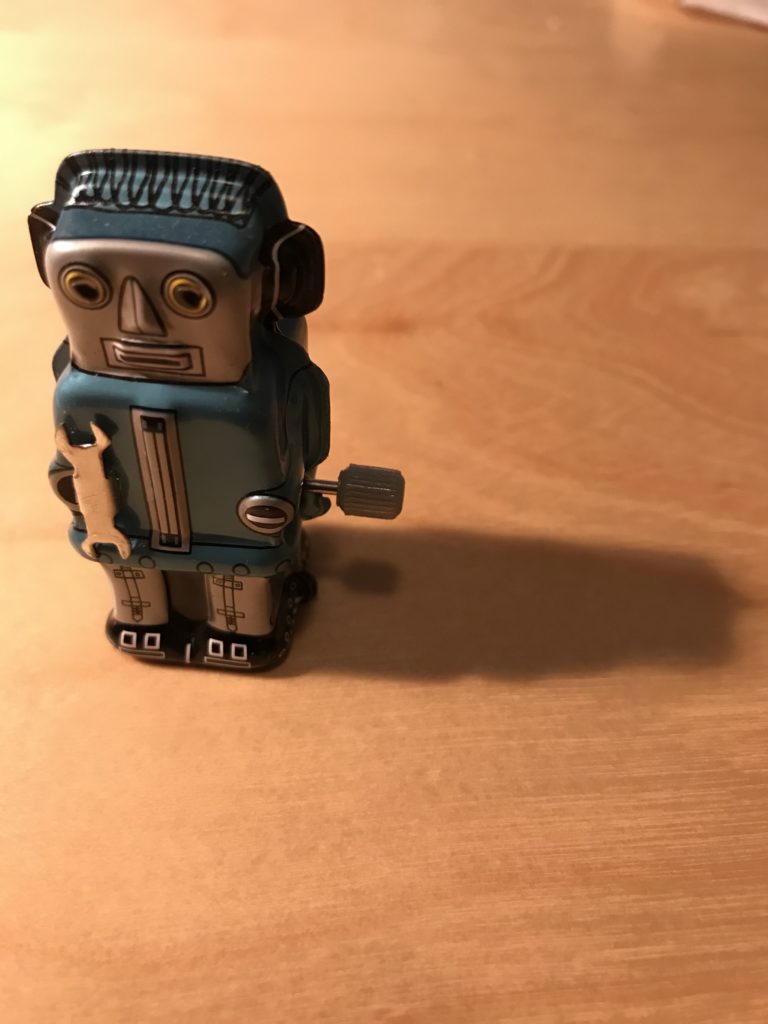Educational chatbots can be present in open and non-sequential environments such as LMSs or personal devices, working as tutoring partners. This entails a distributed cognition between the student and the bot.
They can assume basic duties so that teachers and students can focus on critical tasks, creativity or monitoring of learning.

During the 80s and the 90s, in the field of educational technology it appeared a dichotomy about technology and learning: learning from/of technology and learning with technology. Where do educational chatbots belong in this distinction? Let’s try to give an answer to this question.
The first paradigm, learning from/of technology, sees technology as a tutor or as a teacher. It comes from the vision of B. F. Skinner’s learning machines. These work as close environments that give stimuli to learners so they can give concrete responses, with learning sequences that adapt to the learner’s pace and achievements, aiming for a personalization of learning. From this point of view, learning is not something that is constructed but rather as the product of a sequence of questions and responses on a specific domain of knowledge. It is an assessed drilling. From a theory of learning point of view, it is a behavorist and cognitivist approach that has an influence on the learner’s behaviour and on information processing. When talking about learning from/of technology, computer-assisted instruction (CAI) and Intelligent Tutoring Systems (ITS) come to the fore.
The second paradigm, learning with technology, sees technology as tools that can be used by the student to facilitate knowledge construction. Technology is not an intelligent environment but a non-intelligent tool that, when using it, amplifies our capacities of human activity. It takes on basic cognitive processes such as memory, information retrieval, calculation and information visualization. It also reorganizes human activity making it more efficient and sustainable. For instance, Google Suite apps allow collaboration between a group of students so they are able to edit a document at the same time. Or when making a query in a search engine, a student can bookmark, save, edit and remix information in several formats. This approach empowers students as the main actors of their own learning. It is a (socio) constructivist and constructionist approach (such as Papert’s LOGO), and why not, connectivist (i.e when setting up and using a PLE).
Nowadays, AI-based technology is becoming a buzzword in edtech. Chatbots that integrate AI are a good example of this technology which is being adopted in banking or even in clothing e-commerces. They are useful for the customer service as they can be active 24/7. They are getting popular because are based on chat interfaces that use natural language. In education their affordaces are being explored for efficiency reasons and for their tutoring potential.
In 2018 we published this report on chatbots in education (eLearn Center, UOC) that elicits different types and possible uses of chatbots in educational contexts. There are administration and FAQ chatbots and those with explicitly educational purposes. This last group include drill and practice chatbots and tutoring chatbots. We could call them “educational chatbots”. and include them in the learning from technology group, but I think it is not that simple. Tutoring chatbots are programs that allow a certain degree of freedom and openness, in the sense that students can engage and interact with the chatbot whenever and wherever. They are not a close environment such as the ITS, that are instructional sequences based on the presentation of information and practise exercises with tutoring aids. Chatbots can be present in open and non-sequential environments such as LMSs or personal devices, working as tutoring partners. This entails a distributed congition between the student and the bot.
Vygotsky’s Zone of Proximal Development explains how the learner moves from an initial knowledge stage to a superior one, thanks to expert scaffolding. Now we are in a situation where these scaffoldings can be set by an educational chatbot that works as a cognitive aid. When a student uses a tutoring chatbot tool that offers guidance through learning tasks, facilitating information, orienting and giving timely feedback, this bot is working as a cognitive tool. This adds to the educational toolbox containing tools that amplify our cognition and contribute to reorganize the way of learning, distributing cognitive tasks between the person and the tool. This situation is learning with technology. Maybe it isn’t a disruption of education but it brings a significant change in.
If educational chatbots can assume or help with basic (and dull) cognitive duties, teachers and students can focus on critical thinking, creativity and monitoring of learning. Moreover, they get on well with big data, learning analytics, facial recognition, and so forth.
In 1978, the german electronic music group Kraftwerk wrote the song Die Roboter (the robots). With a synthesized voice and in Russian language, the chorus repeated: “I am your servant, I am your worker” (“Ya tvoy Sluga, Ya tvoy rabótnik”). Robot technology should make our life easier. In education they can work as our cognitive partners, being part of the learning with technology paradigm. But they could also try to replace teachers as part of the learning from/of technology paradigm. Once again it will depend on the powers ruling education.
Kraftwerk– The Robots (EDIT), 2017: